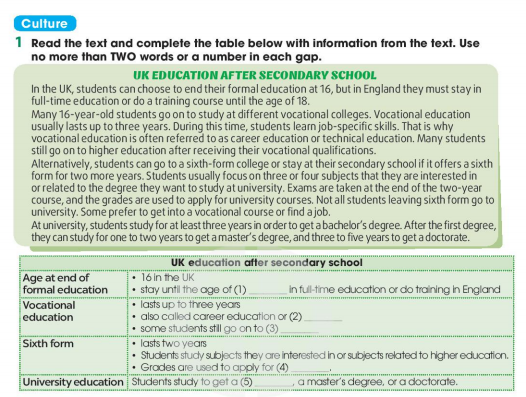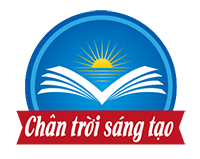Tiếng Anh 11 Global Success Unit 7 Communication and Culture/ CLIL
Tiếng Anh 11 Unit 7 Communication and Culture/ CLIL
Nằm trong bộ tài liệu Giải tiếng Anh 11 Kết nối tri thức theo từng Unit, Soạn tiếng Anh 11 Unit 7 Communication and Culture/ CLIL giúp các em chuẩn bị bài tập SGK tiếng Anh hiệu quả.
Tiếng Anh 11 Global Success Unit 7 Communication and Culture/ CLIL
Bản quyền thuộc về VnDoc nghiêm cấm mọi hành vi sao chép vì mục đích thương mại
Everyday English
Making an appointment (Đặt lịch hẹn)
1. Listen and complete the conversation with the expressions in the box. Then practise it in pairs.
(Nghe và hoàn thành cuộc hội thoại với các biểu thức trong hộp. Sau đó thực hành nó theo cặp.)
Bài nghe

Gợi ý đáp án
|
1. D |
2. C |
3. A |
4. B |
Hướng dẫn dịch
Lan: Ms Ha, (1) D. could I meet you on Thursday afternoon? I would like your advice on how to prepare for my university entrance exam next year.
(Cô Hà, em có thể gặp cô vào chiều thứ Năm được không? Em muốn lời khuyên của cô về cách chuẩn bị cho kỳ thi tuyển sinh đại học của em vào năm tới ạ.)
Ms Ha: Sorry, (2) C. I have another appointment at that time. But I'm free on Saturday morning.
(Xin lỗi, cô có một cuộc hẹn khác vào lúc đó. Nhưng cô rảnh vào sáng thứ Bảy.)
Lan: That would be good for me. What time (3) A. suits you to see you?
(Giờ đó em sắp xếp được ạ. Giờ nào thì thích hợp để em gặp cô ạ?)
Ms Ha: Would 9 o'clock (4) B. shall I come?
(9 giờ cô đến được không?)
Lan: Yes, sounds good. Thank you, Ms Ha.
(Vâng, được ạ. Cảm ơn cô Hà.)
Ms Ha: Ok, then. See you on Saturday in the staff room.
(Vậy nhé. Hẹn gặp em vào thứ Bảy trong phòng giáo viên nhé.)
2. Work in pairs. Use the model in 1 to make similar conversations for these situations. One of you is Student A, the other is Student B. Use the expressions below to help you.
(Làm việc theo cặp. Sử dụng mô hình trong phần 1 để tạo các hội thoại tương tự cho các tình huống này. Một trong số các bạn là Học sinh A, người kia là Học sinh B. Sử dụng các biểu thức dưới đây để giúp bạn.)
1. Student A, a secondary school student, makes an appointment to see Student B, a university representative, to ask for advice on his/her education plans after leaving school. Student B can’t make the suggested day/time and proposes another day / time.
(Học sinh A là học sinh cấp 2 hẹn gặp Học sinh B đại diện trường đại học để xin ý kiến về kế hoạch học tập sau khi rời ghế nhà trường. Học sinh B không hẹn được ngày/giờ và đề xuất một ngày/thời gian khác.)
2. Student B, a secondary school student, makes an appointment to see Student A, a career advisor, to ask for advice on vocational courses. Student A can‘t make the suggested day / time and proposes another day / time.
(Học sinh B là học sinh cấp 2 hẹn gặp cố vấn nghề nghiệp của học sinh A để xin tư vấn về các khóa học nghề. Học sinh A không đến được ngày/giờ đã đề xuất và đề nghị ngày/giờ khác.)
Gợi ý đáp án
1. A: Hello, I'm a secondary school student and I'm interested in getting some advice on my education plans after leaving school. Can I make an appointment with you?
B: Sure, that sounds great. When were you thinking of meeting?
A: How about next Monday afternoon?
B: I'm afraid I have another meeting then. Could we meet on Wednesday instead?
A: Yes, Wednesday works for me. What time would be suitable for you?
B: How about 3 p.m.?
A: That's perfect. Thank you.
2. B: Hello, I'm a secondary school student and I'm interested in getting some advice on vocational courses. Can I make an appointment with you?
A: Of course, I'd be happy to help. When were you thinking of meeting?
B: How about next Tuesday morning?
A: I'm sorry, I have another appointment at that time. But I'm free on Thursday afternoon.
B: Thursday afternoon works for me. What time suits you to see you?
A: Would 2 pm be okay?
B: Yes, that works for me. Thank you.
Culture
1. Read the text and complete the table below with information from the text. Use no more than TWO words or a number in each gap.
(Đọc văn bản và hoàn thành bảng dưới đây với thông tin từ văn bản. Sử dụng không quá HAI từ hoặc một số trong mỗi khoảng trống.)

Gợi ý đáp án
|
1. 18 |
2. technical education |
3. higher education |
|
4. university courses |
5. bachelor’s degree |
|
Hướng dẫn dịch
ANH GIÁO DỤC SAU TRUNG HỌC
Ở Vương quốc Anh, học sinh có thể chọn kết thúc chương trình giáo dục chính quy năm 16 tuổi, nhưng ở Anh, học sinh phải tiếp tục học toàn thời gian hoặc tham gia một khóa đào tạo cho đến năm 18 tuổi.
Nhiều học sinh 16 tuổi tiếp tục học tại các trường cao đẳng nghề khác nhau. Giáo dục nghề nghiệp thường kéo dài đến ba năm. Trong thời gian này, sinh viên học các kỹ năng cụ thể cho công việc. Đó là lý do tại sao giáo dục nghề nghiệp thường được gọi là giáo dục nghề nghiệp hoặc giáo dục kỹ thuật. Nhiều sinh viên vẫn tiếp tục học cao hơn sau khi nhận được bằng cấp nghề.
Ngoài ra, học sinh có thể theo học một trường cao đẳng dạng thứ sáu hoặc ở lại trường trung học của họ nếu trường đó cung cấp dạng thứ sáu trong hai năm nữa. Sinh viên thường tập trung vào ba hoặc bốn môn học mà họ quan tâm hoặc liên quan đến bằng cấp mà họ muốn theo học tại trường đại học. Các kỳ thi được thực hiện vào cuối khóa học hai năm và điểm số được sử dụng để nộp đơn vào các khóa học đại học. Không phải tất cả học sinh rời lớp sáu đều vào đại học. Một số thích tham gia một khóa học nghề hoặc tìm việc làm.
Tại trường đại học, sinh viên học ít nhất ba năm để lấy bằng cử nhân. Sau văn bằng thứ nhất, họ có thể học từ 1 đến 2 năm để lấy bằng thạc sĩ và từ 3 đến 5 năm để lấy bằng tiến sĩ.
2. Work in groups. Discuss the similarities and differences between education after leaving school in Viet Nam and in the UK.
(Làm việc nhóm. Thảo luận về những điểm tương đồng và khác biệt giữa giáo dục sau khi rời ghế nhà trường ở Việt Nam và Vương quốc Anh.)
Gợi ý đáp án
Similarities:
- Both countries offer vocational education as an alternative to traditional academic education after secondary school.
- In both countries, students can continue their education after secondary school to obtain a bachelor's degree, master's degree, or a doctorate.
- In both countries, grades are important for further education, with students needing to achieve good grades to progress to higher levels of education.
Differences:
- In Vietnam, there is a strong emphasis on academic education, with vocational education being seen as a secondary option. In contrast, vocational education is given more importance in the UK and is often referred to as career education or technical education.
- In the UK, students have the option of attending sixth-form colleges or staying at their secondary schools for two more years to study subjects they are interested in or subjects related to higher education. Such an option is not available in Vietnam.
- The education system in Vietnam is heavily influenced by the government and is more centralized, while the UK education system is more decentralized and allows for greater autonomy in decision-making by schools and teachers.
- The length of time spent in university in Vietnam is longer compared to the UK. In Vietnam, a bachelor's degree can take up to five years to complete, while in the UK, it takes three years.
- These are just a few examples of the similarities and differences between the education systems in Vietnam and the UK. Students in the group discussion can explore these points in more detail and also add their own observations and experiences to the discussion.
Trên đây là Soạn tiếng Anh 11 Global Success Unit 7 Communication and Culture/ CLIL đầy đủ nhất.








